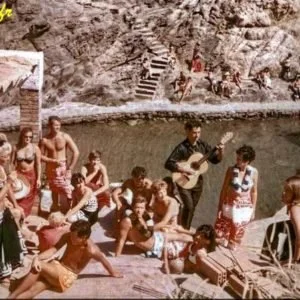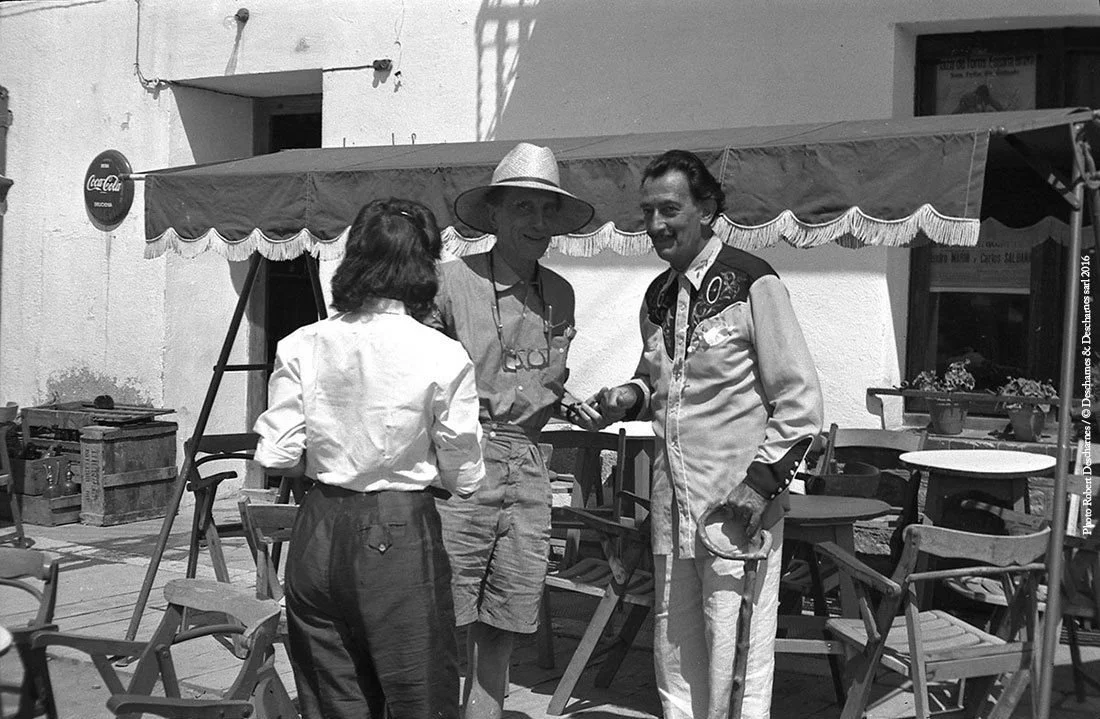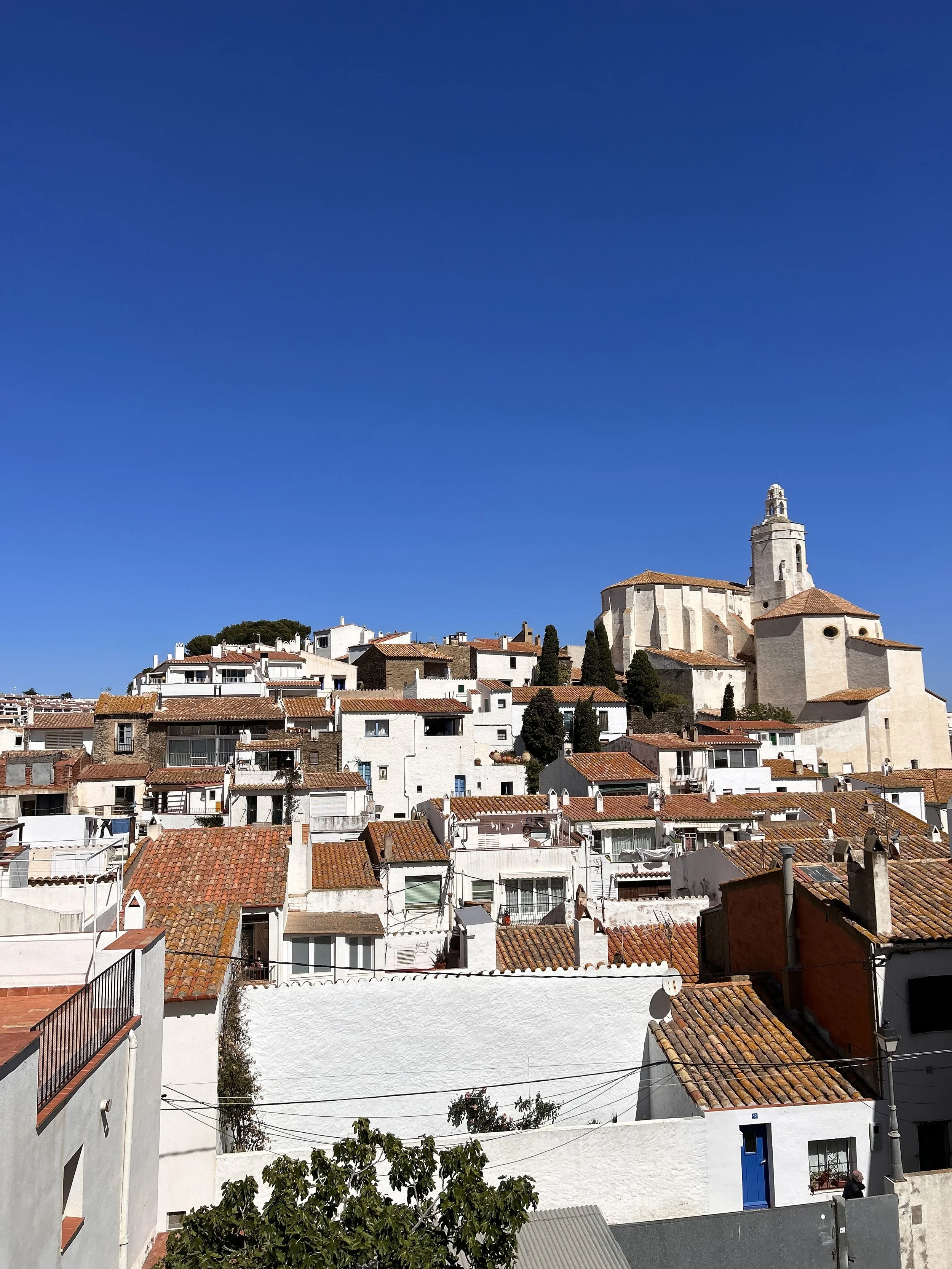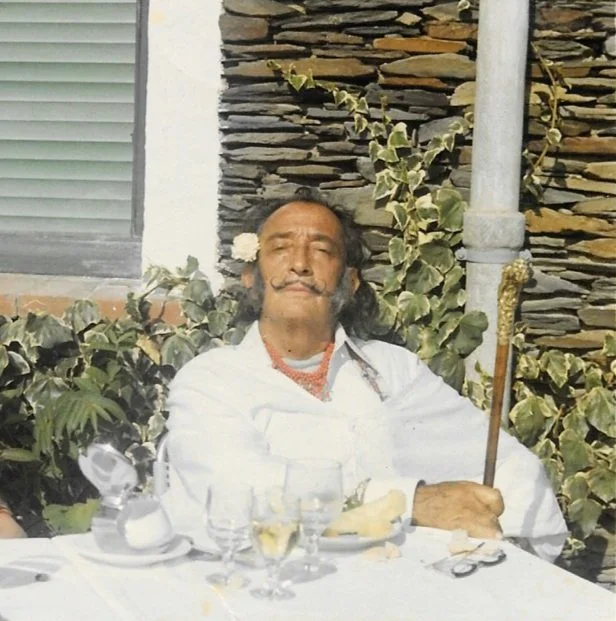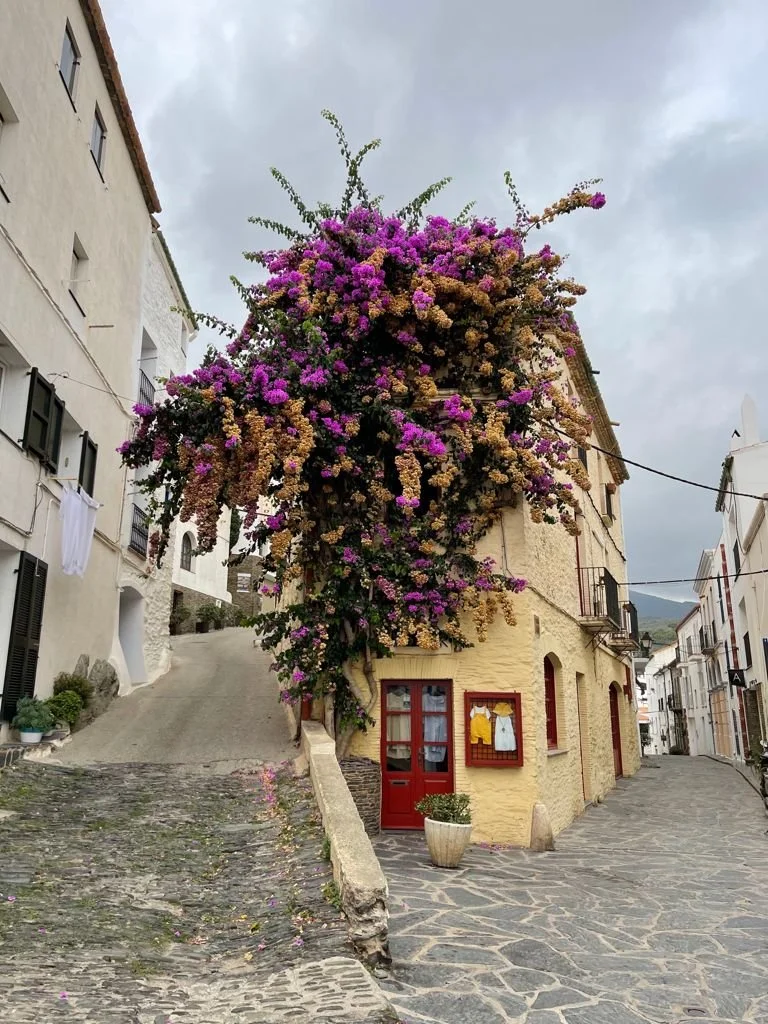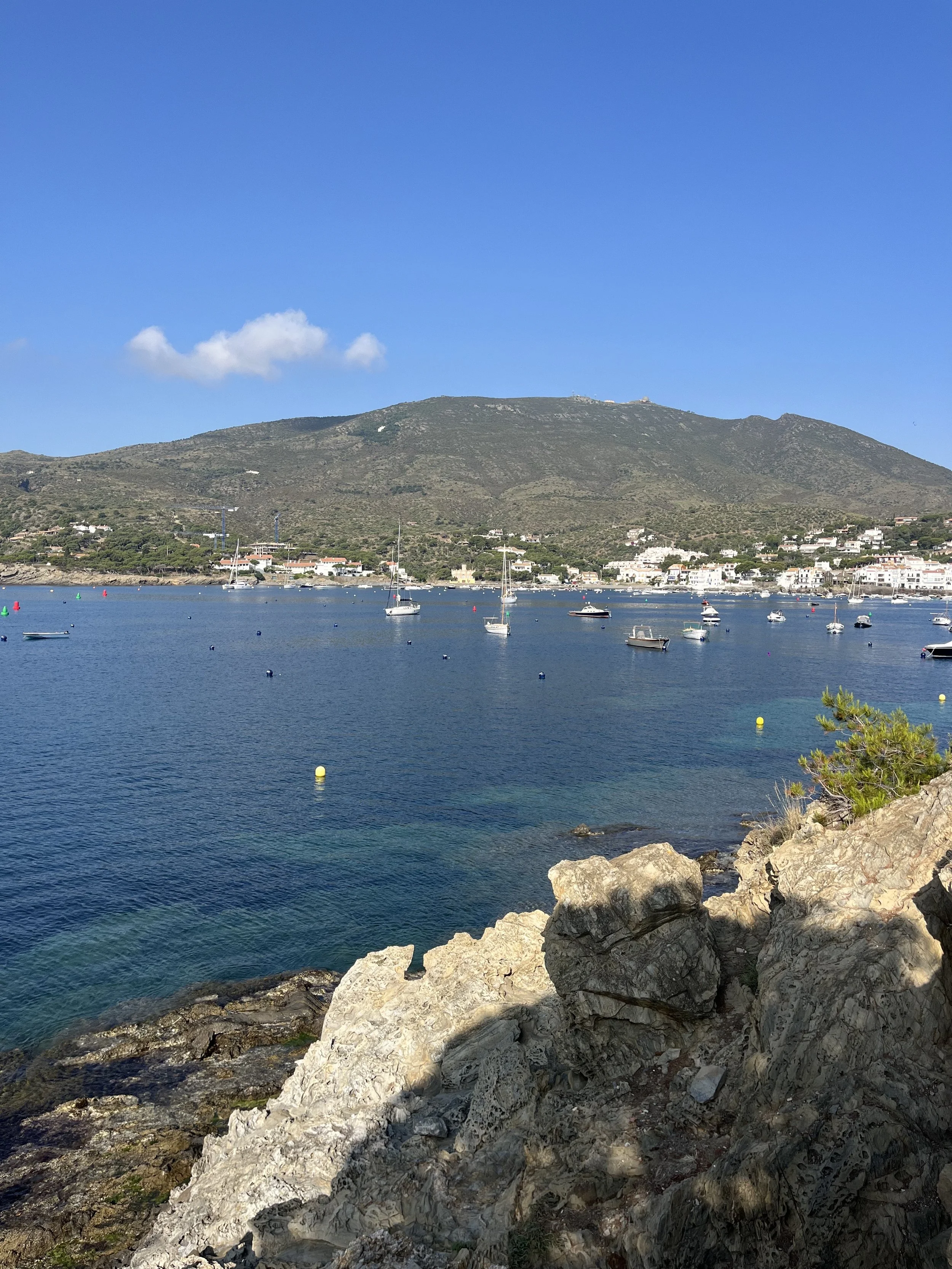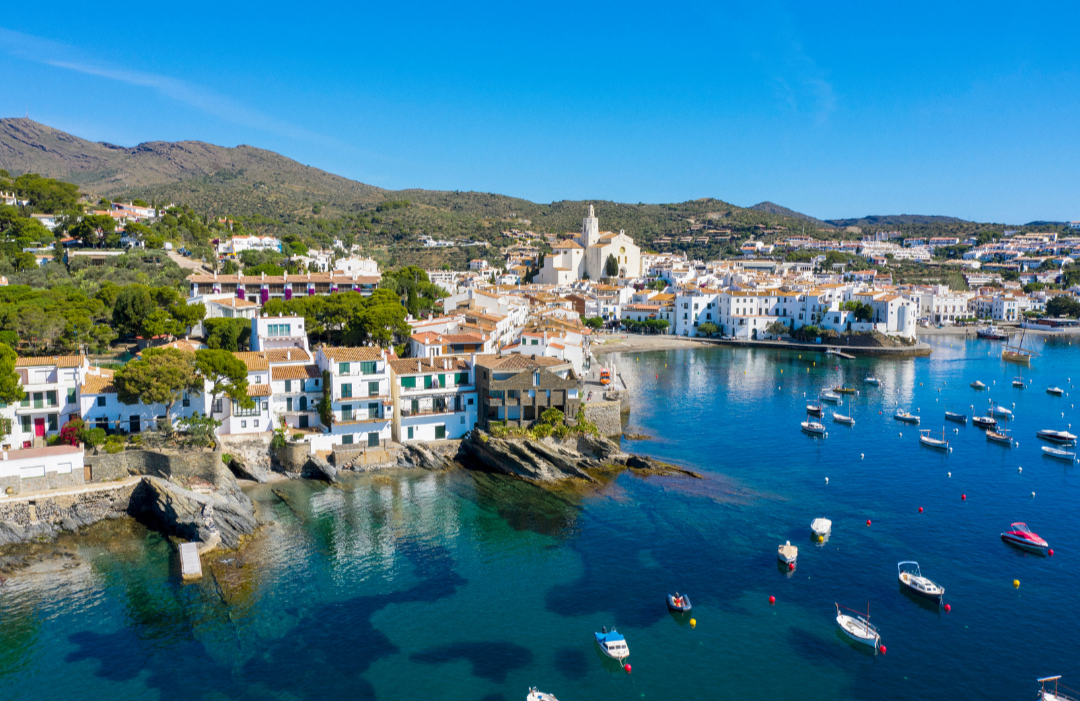
Casa Verda : Luxury villa in Cadaqués > Cadaqués Travel Guide > Cadaqués history
The History of Cadaqués:
From Fishing Village to Art Destination
Set along the wild coastline of Cap de Creus, Cadaqués has a story as captivating as its landscape. Once a quiet fishing village, it gradually transformed into a magnet for artists, dreamers and free spirits. This unique mix of tradition and creativity continues to shape the town’s identity today.
Why is Cadaqués So Unique?
There are places that leave an impression and then there’s Cadaqués, a village that lingers in the imagination long after you’ve left. What sets it apart isn't just its stunning location between the jagged rocks of Cap de Creus and the gentle curve of the Mediterranean, but the way it has remained defiantly itself. Here, the rhythm of daily life still follows the sea breeze, the bells of Santa Maria and the quiet hum of creativity that floats through narrow cobbled alleys.
While much of the Mediterranean coastline has been transformed by mass tourism, Cadaqués has resisted the current. There are no towering hotels, no soulless resorts - only the preserved charm of traditional houses, discreet guesthouses and local cafés where conversations stretch into the afternoon. This is a village shaped not by trends, but by generations of artists, fishermen, and dreamers. It is this equilibrium - between landscape and legend, simplicity and sophistication - that makes Cadaqués so unlike anywhere else. To visit is not merely to see, but to feel something timeless.
Cadaqués Before Tourism: A Fishing Village Through the Centuries
Life by the Sea: Fishing and Maritime Traditions
Long before it became a popular tourist destination, Cadaqués was a secluded village nestled between the rugged cliffs of the Costa Brava and the Mediterranean Sea. Its remote location on the Cap de Creus peninsula shaped the identity of the locals, who relied almost entirely on the sea for survival. Generations of fishermen set out in traditional wooden boats, known as llaguts, casting their nets into the rich coastal waters. Fishing wasn’t just an economic activity - it was a way of life that dictated the daily rhythms of the village. The catch of the day was not sold individually but shared among families, reinforcing a strong sense of community and solidarity. From sunrise departures to the return of the boats at dusk, maritime customs formed the heartbeat of Cadaqués. Over time, these practices evolved into deeply rooted seafaring traditions, many of which are still celebrated during local festivals and cultural events today.
Local Architecture and Village Life in the Past
In the centuries before mass tourism, Cadaqués preserved the charm of a quaint Mediterranean village, deeply influenced by Catalan traditions and its coastal geography. The village's layout was not only picturesque but strategic: narrow alleyways, clustered whitewashed houses, and terracotta roofs created a tightly knit urban fabric, designed in part to resist pirate attacks, which were a real threat along the Iberian coastline from the Middle Ages to the 18th century. Many homes were built without direct sea views to avoid detection, and the church of Santa Maria, overlooking the bay, doubled as a refuge during raids.
Life in Cadaqués revolved around community and self-sufficiency. Fishermen, artisans, and families maintained a lifestyle deeply attuned to the natural landscape and the rhythms of the sea. Locals gathered in small plazas and cafés, shared harvests from terraced gardens, and passed down stories of seafaring and survival. The architecture, while modest, speaks volumes about a people shaped by both the beauty and dangers of their environment, long before the arrival of tourists, art galleries, and international attention transformed the town into one of Catalonia’s most sought-after destinations.
19th Century Changes: Wine, Trade and Migration
During the 19th century, Cadaqués experienced a remarkable period of economic growth thanks to its thriving wine industry. The hills surrounding the village were covered with terraced vineyards, producing a robust local wine that was exported across the Mediterranean and as far as Latin America. This trade brought newfound prosperity to the village and for a time, wine overtook fishing as the main source of income. However, this golden era was short-lived: the arrival of the phylloxera plague, which devastated European vineyards in the late 1800s, abruptly halted production and plunged the local economy into crisis.
In response, many villagers migrated to Cuba, Argentina and other parts of South America, seeking new opportunities. Some returned decades later, having found success abroad. Their influence left a visible mark on the town, particularly in the form of colonial-style houses with decorative facades, large balconies and palm-lined courtyards that still contrast with the traditional Mediterranean architecture of the old town. These returning migrants, often referrred to as Indianos, brought back not only wealth but also new ideas, styles and a spirit of openness that helped shape Cadaqués’ transition from an isolated fishing village into a more connected and culturally curious coastal community.
20th Century: Cadaqués Becomes an Artistic Haven
In the early 20th century, the secluded beauty and dramatic coastline of Cadaqués began to attract artists, writers and intellectuals seeking inspiration off the beaten path. Far from the crowds and urban noise, this picturesque village offered a peaceful retreat, where the Mediterranean light, whitewashed walls, and labyrinthine streets sparked endless creativity. Artists from Barcelona, Paris, and beyond made the journey, often as a summer getaway or a longer artistic retreat. The village soon became known as a cultural destination, with informal salons, art gatherings and exhibitions in local cafés and boutiques. Figures such as Federico García Lorca, Marcel Duchamp and Man Ray left their mark here, helping to build Cadaqués’s reputation as one of the most unique travel destinations on the Catalan coast for lovers of art and culture.
The Arrival of Artists and Writers
Salvador Dalí and his deep connection to Cadaqués
Among all the artists who passed through Cadaqués, none left a deeper imprint than Salvador Dalí. Born in nearby Figueres, Dalí discovered the village in his childhood and quickly fell under its spell. The breathtaking landscapes, jagged rocks and surreal forms of the Cap de Creus peninsula fed his imagination and later appeared in many of his iconic works. Cadaqués became not just a place of rest but a lifelong source of artistic inspiration. In the 1930s, Dalí settled in Portlligat, a small cove next to the village, where he transformed a group of fishermen’s huts into a labyrinthine home-studio. Today, the Salvador Dalí House-Museum is one of the region’s most visited cultural landmarks, attracting art lovers and tourists from around the world. Dalí’s presence turned Cadaqués into a modernist pilgrimage site, cementing its place on the map as a top destination for those looking to admire the intersection of art, nature and Mediterranean heritage.
Preserving the Soul of Cadaqués in Modern Times
Despite its growing popularity as a tourist destination, Cadaqués has managed to preserve its unique character and cultural identity. Unlike many other coastal towns affected by mass tourism, Cadaqués has actively resisted the development of large hotel complexes, high-rise buildings and sprawling resorts. Local authorities and residents have long prioritized the preservation of the village’s architectural heritage, maintaining strict regulations to protect its historic center, sun-bleached stone facades and traditional Catalan charm. This commitment to sustainable tourism has helped the town avoid the pitfalls of overdevelopment and retain the intimate atmosphere that once drew artists and thinkers.
Today, Cadaqués continues to enchant travellers from around the world with its natural beauty, Mediterranean lifestyle and artistic legacy. Visitors can explore its winding streets, discover small art galleries, enjoy local cuisine in seaside cafés or take a walking tour along the wild cliffs of Cap de Creus National Park. Though it now welcomes tourists year round, Cadaqués has never become a theme park version of itself. It remains a vibrant, living village, where history, creativity and the sea still define daily life, a true gem of Catalonia that continues to inspire without ever losing its soul.
Extend your Journey Through Time at Casa Verda
After exploring the history of Cadaqués, stay at Casa Verda, a peaceful villa in the heart of the village. Set among the town’s timeless streets, it offers an authentic and comfortable base to experience local life past and present.
Discover more about Cadaqués
While the past gives Cadaqués its soul, there’s so much to enjoy in the present. We’ll guide you to the best restaurants, relaxed bars, beautiful beaches and experiences that make the village just as vibrant today as it is rich in history.
Cadaqués History: Frequently Asked Questions
-
Cadaqués was first documented in the 9th century, though its origins go back further, with evidence of Iberian and Roman settlements in the area. Its location on a remote Mediterranean peninsula helped preserve the village’s identity long before it became a popular tourist destination on the Costa Brava.
-
Historically, Cadaqués is known as a fishing village that thrived in isolation, protected by the rugged coastline of the Cap de Creus peninsula. Over time, it became a haven for artists, most famously Salvador Dalí and evolved into a picturesque destination celebrated for its Mediterranean charm, cultural heritage and unique role in Catalan history.
-
In the early 20th century, Cadaqués became a magnet for painters, writers, and avant-garde thinkers drawn by its natural beauty and light. Figures like Salvador Dalí, Picasso and Miró spent time here, turning the town into a quiet center of artistic experimentation. Their presence left a lasting mark - from local galleries and exhibitions to the village’s reputation as a one-of-a-kind cultural destination on the Mediterranean coast.
-
Cadaqués is not listed as a UNESCO World Heritage site, nor is the whole village officially classified under UNESCO’s heritage protection. Landmarks such as the medieval Castell de Sant Jaume, the historic church of Santa Maria and the Dalí House-Museum are individually recognized as cultural heritage of regional or national importance within Catalonia. While the village itself doesn’t benefit from UNESCO protection, its preserved architecture, historic monuments and cultural heritage contribute to its reputation as a picturesque destination on the Catalan coastline.





